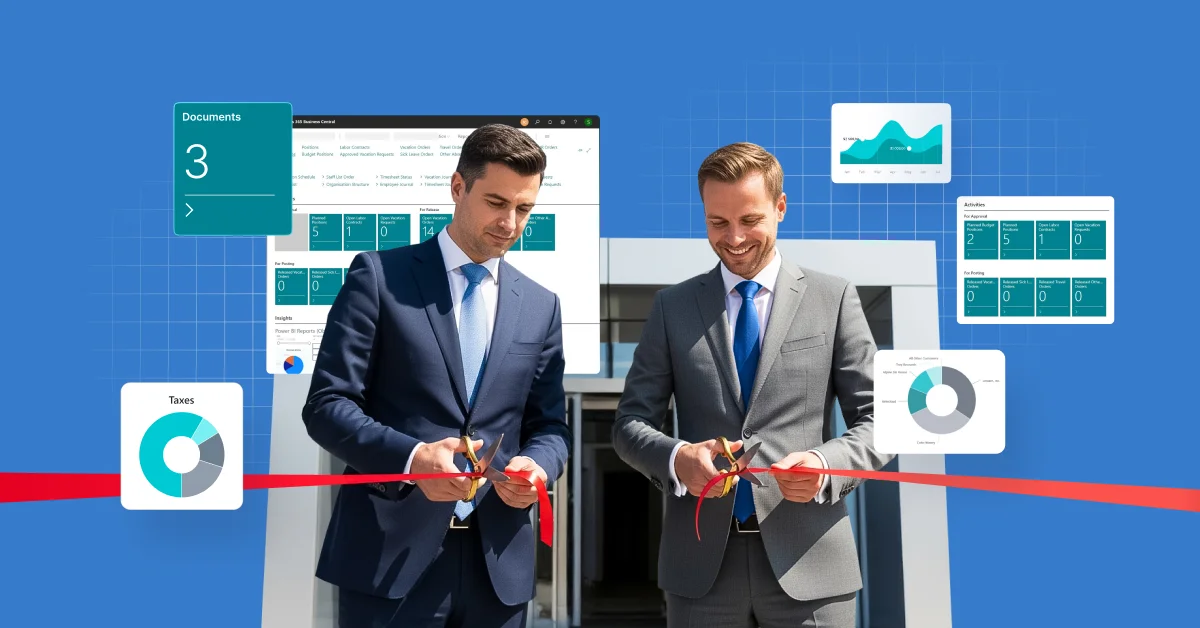AccessBank’s focus is sustainable growth — not just as a bank, but as a trusted partner in the financial development of its clients. The company’s operations are guided by four core principles: transparency, customer orientation, innovation, and responsibility. The effectiveness of this strategy is well recognized — in 2010, Standard and Poor’s named AccessBank the “most transparent” bank in Azerbaijan.
The company is committed to building an ecosystem of modern, effective digital solutions that support business growth and contribute to the development of Azerbaijan’s economy. In particular, AccessBank focuses on financial inclusion (providing necessary equipment to entrepreneurs in vulnerable groups), promoting financial literacy across the country, and supporting women’s entrepreneurship through initiatives such as Access2Access. The bank’s initiative and professionalism have earned it numerous awards, including “Bank of the Year” from Banker in 2011, 2012, 2015, 2016, and 2020.
Delivering this level of service requires strong technical support. For this reason, AccessBank decided to implement new software to automate accounting, inventory management, and internal operations. The bank chose Microsoft Dynamics 365 Business Central — and the story of its integration and the results achieved is detailed in this new success story.
Implementation Goals: What AccessBank Required from New Software
The need to keep pace with the modern financial sector and focus on future scalability prompted AccessBank to rethink its approach to accounting and inventory management. It became clear that the existing model required digital enhancement and transformation. Since speed and efficiency have always been a top priority for the company’s services, the decision was made to select and integrate a modern, user-friendly system for automating internal operational processes. The updated software was expected to address several key limitations:
- Manual accounting and inventory management: Many steps in the bank’s accounting and inventory processes were performed manually. This not only slowed down operations but also reduced overall efficiency and increased the risk of human error.
- Lack of a centralized asset management system: Because accounting and inventory processes were not fully coordinated, accessing necessary data in real time was difficult. This, in turn, reduced the quality of control and the transparency of information.
- Long and complex inventory process: Manual handling of inventory consumed significant resources, took a lot of time, and did not always deliver the desired results.
All the challenges mentioned above increasingly added both administrative and financial pressure on the bank. For this reason, AccessBank decided not just to implement modern IT tools, but to fully transform one of its key internal business processes according to best global practices. Accordingly, the requirements for the new software were clear and non-negotiable:
- Integration capabilities: It was crucial for AccessBank that the new software could be deeply integrated with the existing IT infrastructure without disrupting current accounting and inventory processes.
- Flexible architecture: The solution needed to be adaptable for modifications, scaling, customization, and additional configurations — allowing the system to be fully tailored to the company’s processes.
- Centralized management: One of the core requirements was to ensure centralized asset management across the bank’s entire network through a single system.
- User-friendly interface: The potential system had to be intuitive and easy to use for all employees.
- Vendor readiness for customization: Given AccessBank’s specific requirements, it was important that the vendor implementing the solution be prepared to customize the software as needed.
AccessBank evaluated many options, both local and international. Ultimately, Microsoft Dynamics 365 Business Central, implemented by SMART business, was chosen for its balanced functionality, scalability, and adaptability to the bank’s specific needs.
With extensive experience and numerous successful implementations in the banking sector, the SMART business team demonstrated a deep understanding of AccessBank’s processes and a readiness to adapt to their unique requirements. The company offered a technically mature and robust solution from Microsoft, a trendsetter in innovative technologies — which became the decisive factor in selecting them as the vendor.
Implementation Process and Technical Features of Microsoft Dynamics 365 Business Central

To ensure the implementation process was as effective as possible, AccessBank and the SMART business team defined key project checkpoints: clearly articulating integration goals, actively involving end users for feedback, developing a pilot project to test hypotheses, and applying project management methodologies to control risks.
The integration process for Microsoft Dynamics 365 Business Central began with a foundational audit of the existing workflow to identify pain points. Once the main areas for integration were determined, the SMART business specialists proposed a solution architecture tailored to AccessBank’s specific requirements. This was followed by step-by-step configuration, testing, and integration with the bank’s existing software.
As with any large-scale IT project, challenges arose during implementation, and integrating the new solution into AccessBank’s daily operations was no exception. For example, integrating the system with existing internal platforms and configuring real-time data exchange proved challenging. Since the bank previously lacked a centralized asset management system, consolidating all information without losing critical data or disrupting key processes was a particularly complex task. However, thanks to close collaboration between the SMART business team and AccessBank’s IT department, this stage was successfully completed, turning a major challenge into a solution that immediately began demonstrating tangible benefits.
Seamless Inventory in Action: Automating the Process with RFID and Microsoft ERP
The bank’s updated inventory process was built on a combination of advanced technologies, including a system of RFID tags attached to each asset. This approach allows assets to be identified automatically, without the need for additional barcode scanning or manual entry. Mobile devices equipped with RFID scanners enable employees to quickly scan assets even in remote branches.
Integration of this system with Microsoft Dynamics 365 Business Central ensured real-time data exchange between mobile devices and the central asset database. This created a seamless inventory system with a minimal margin of human error.
This inventory approach is particularly well-suited for organizations with large numbers of assets and multi-branch operations. Combining the RFID system with a centralized accounting platform provides several key benefits:
- Fast asset identification.
- Minimized errors in record-keeping.
- Ability to conduct inventory without disrupting branch operations.
- Improved transparency of asset movement across the entire organization.
Adapting to the New Solution: How the AccessBank Team Responded
Integrating a new system and fully transforming workflows sometimes requires team adaptation and can initially be met with natural resistance — especially when the previous workflow model had been in use for many years. This is why preparing the team for the software update is crucial: explaining why the change is happening, how the new system works, and how to use it effectively. The AccessBank team handled this task with exceptional professionalism.
From the very beginning, employees showed interest in the project, understanding its importance for optimizing daily operations. During the integration process, the bank’s team, together with SMART business experts, focused on thorough employee training, creating documentation, and developing user guides.
To make adaptation as smooth as possible, the system was implemented in stages: starting with a pilot version and progressing to full deployment, with the flexibility to make adjustments at each stage based on feedback. As a result, AccessBank employees received a practical, functional, and user-friendly tool. The ultimate goal — ensuring high adoption of the system in everyday company operations — was successfully achieved.
Results of Implementing Microsoft Dynamics 365 Business Central: Achieved Goals and Changes in Accounting and Inventory Processes
According to the AccessBank team, all key objectives of implementing Microsoft Dynamics 365 Business Central have been successfully achieved. The project’s impact was noticeable almost immediately:
- Inventory of fixed assets is no longer a complex, resource-intensive process. Most operations that were previously performed manually have been fully automated. Inventory management has become transparent, structured, and fast.
- All company data is now stored in a single centralized system, providing employees with real-time access to critical information. This has significantly reduced the risk of data loss or duplication.
- Thanks to the user-friendly interface and unified system, employees can manage assets both in the office and in the field. This has improved team engagement and overall satisfaction.
- Data discrepancies have been minimized through the ability to quickly synchronize actual asset availability with accounting records.
Implementing Microsoft Dynamics 365 Business Central has significantly reduced the administrative burden on the bank, allowing resources to be reallocated to higher-priority tasks. At the same time, automating fixed-asset management processes has directly improved business process efficiency: staff workload has decreased, data accuracy has increased, and management decisions are now made faster and more effectively.
These achievements are the result of AccessBank’s systematic and deliberate approach to digital transformation. The digitalization project has impacted not only accounting but also the quality of internal management, strengthened strategic planning, and opened new opportunities for the bank’s growth.
However, the company does not intend to stop here. As AccessBank continues to evolve, internal processes are being transformed, and the organization’s IT strategy is adapting to current market standards. The bank regards SMART business as a long-term partner and plans to collaborate on further automation initiatives in the future.
AccessBank’s Future Plans and Advice for Peer Companies
In the near term, AccessBank plans to continue using Microsoft Dynamics 365 Business Central, as the solution fully addresses their core needs for automating accounting and inventory processes. However, the modern market sets a fast pace, and there is always room for improvement. The bank therefore intends to continue digitalizing its workflows to ensure the best possible experience for both clients and employees. Based on the successful collaboration so far, AccessBank also plans to involve SMART business in implementing future projects.
To other companies in the sector, AccessBank recommends not postponing digital transformation “until the convenient moment”. Drawing from their practical experience, the organization highlights several key factors for achieving maximum impact when implementing new software:
- Clearly define project goals and align them with all stakeholders.
- Engage key users from the very start to incorporate real-world insights.
- Choose solutions that are easily adaptable and integrate smoothly into existing IT environments.
- Pay attention not only to the product itself but also to the vendor team — experience and engagement play a crucial role in project success.
The best implementation results can be achieved through the synergy of the partner’s expertise in business processes, deep knowledge of the system, and clear methodology on the one hand, and the customer’s commitment to change, systematic approach, and flexibility in adopting innovations on the other. In such cases, the joint team operates as a well-coordinated mechanism — without unrealistic expectations or shifting responsibilities. The AccessBank team played a significant role in achieving the project goals thanks to their strong motivation and professionalism.



